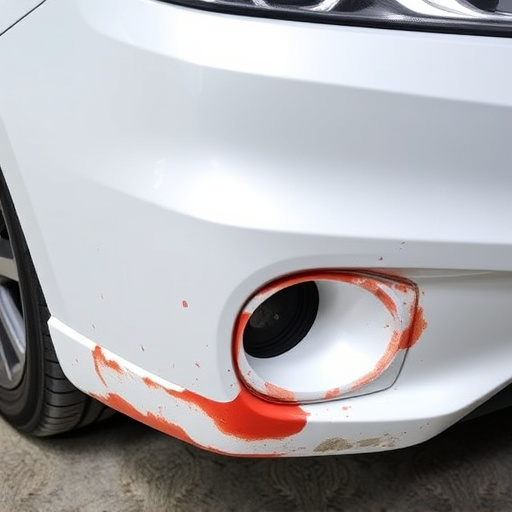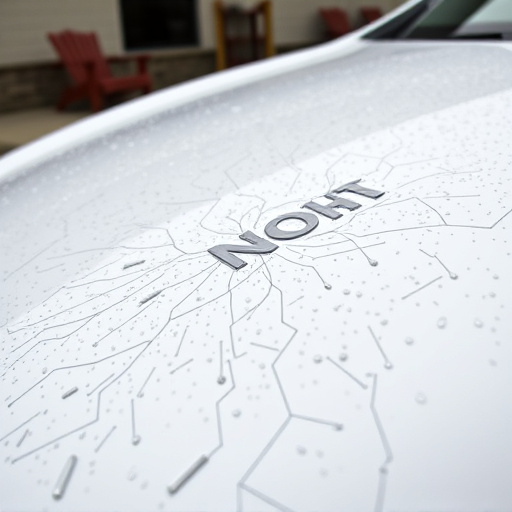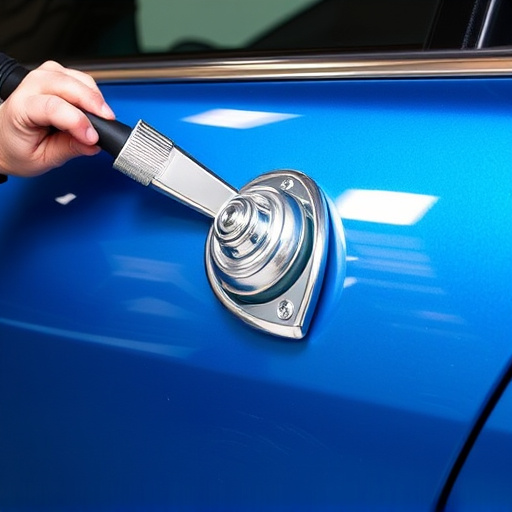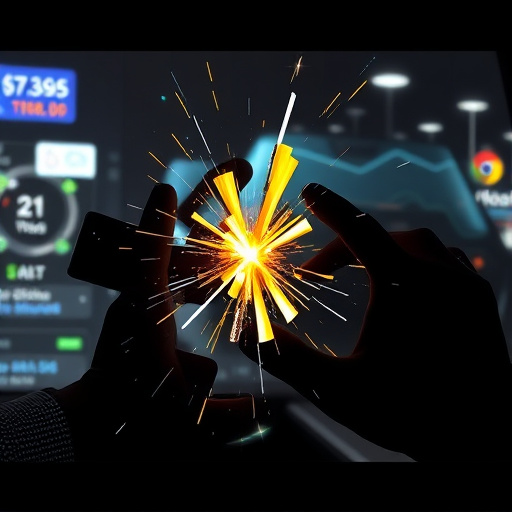Ensuring Safety: Essential Post-Repair Checks in Emergency Collision Repair

Rigorous post-repair inspections in emergency collision repair ensure vehicle safety and quality. Th…….
In the fast-paced world of automotive services, emergency collision repair stands as a critical component of ensuring road safety and vehicle longevity. This specialized field involves the rapid and efficient restoration of vehicles damaged in accidents, requiring skilled technicians and advanced equipment. The process is designed to minimize downtime, maximize structural integrity, and restore vehicles to their pre-accident condition as quickly as possible. This article delves into the intricate world of emergency collision repair, exploring its definition, global impact, economic significance, technological innovations, regulatory frameworks, challenges, successful implementations, and a glimpse into its future prospects. By the end, readers will grasp the essential role this sector plays in supporting both individuals and the automotive industry as a whole.
Definition: Emergency collision repair, often referred to as crash repair or accident restoration, is a specialized service that deals with the immediate and urgent needs of vehicles involved in collisions. It involves the assessment, disassembly, repair, and re-engineering of damaged automobiles to ensure they meet safety standards and return to service in the shortest time feasible.
Core Components:
Initial Assessment: The process begins with a thorough inspection of the vehicle to identify structural damage, estimate repair costs, and determine the scope of work required.
Disassembly and Safety: Skilled technicians carefully disassemble specific components while ensuring the vehicle’s safety and stability to prevent further damage during the repair process.
Repair and Replacement: This stage involves repairing or replacing damaged parts, including body panels, frameworks, and mechanical systems. Advanced tools and techniques are employed to ensure precision and structural integrity.
Re-engineering and Alignment: Post-repair, vehicles undergo re-engineering to match their original specifications precisely. Wheel alignment, suspension adjustments, and computer-aided repairs ensure optimal performance and handling.
Quality Control and Final Inspection: Every repaired vehicle undergoes rigorous quality control checks, including structural integrity tests and paint analysis, to guarantee customer satisfaction and safety.
Historical Context: The concept of emergency collision repair has evolved over decades, driven by advancements in automotive technology and a growing emphasis on road safety. Post-World War II, the automotive industry experienced rapid growth, leading to more sophisticated vehicles and an increased need for specialized repair services. Over time, regulatory bodies implemented stricter safety standards, prompting the development of advanced repair techniques and training programs. Today, emergency collision repair centers are equipped with state-of-the-art facilities, employing cutting-edge technology to enhance efficiency and precision.
Emergency collision repair services have a profound global impact, influencing vehicle safety, insurance practices, and the overall automotive ecosystem. Here’s an overview of key trends shaping this industry internationally:
Regional Disparities: The availability and quality of emergency collision repair facilities vary significantly across regions. Developed nations often boast advanced repair centers with well-trained technicians, while emerging markets may struggle with limited resources and infrastructure.
Urban vs. Rural Divide: Urban areas typically have a higher density of collision repair centers due to increased vehicle traffic and accidents. In contrast, rural regions often face challenges in accessing specialized services, leading to longer response times and potential delays in repairs.
Technological Adoption: Global trends show a growing adoption of advanced technologies in collision repair, including computer-aided design (CAD), laser measurement systems, and robotic welding. These innovations improve precision, speed up repairs, and enhance overall efficiency.
Sustainability Focus: There is a rising emphasis on eco-friendly practices within the industry. Centers are adopting more sustainable materials, recycling programs, and energy-efficient equipment to reduce their environmental footprint.
Telematics and Data Analysis: The integration of telematics and data analytics allows for real-time tracking of vehicle repairs, inventory management, and predictive maintenance, streamlining operations and reducing costs.
The economic aspects of emergency collision repair are multifaceted, influencing both the automotive industry and the wider economy.
Market Dynamics: The global collision repair market is a significant segment within the automotive aftermarket, valued at over $200 billion in 2022. This market is expected to grow at a CAGR of 5-7% during the forecast period (2023-2030), driven by increasing vehicle sales and stringent safety regulations.
Investment Patterns: Major automotive manufacturers invest heavily in collision repair infrastructure, particularly in regions with high vehicle density. These investments ensure efficient post-crash support for their vehicle fleets and enhance customer satisfaction.
Economic Impact: Emergency collision repair services contribute to economic growth by supporting:
Cost Analysis: Repair costs vary widely depending on the severity of damage, vehicle model, and regional labor rates. According to IHS Markit data, average repair costs for light vehicles range from $1500 to $3000 per incident, with more severe accidents leading to higher expenditures.
Technological innovations have revolutionized emergency collision repair, improving efficiency, precision, and safety. Notable advancements include:
Computer-Aided Design (CAD) Software: CAD systems enable technicians to create precise digital models of vehicles, facilitating complex repairs and ensuring accurate part replacements.
Laser Measurement Systems: These tools provide highly accurate measurements, enabling faster and more exacting panel replacement and alignment.
Robotic Welding: Robotic arms offer increased precision and consistency in welding processes, reducing repair time and enhancing structural integrity.
Virtual Reality (VR) Training: VR technologies simulate real-world collision scenarios, providing immersive training experiences for technicians, leading to improved skills and safety.
Advanced Materials: Newer materials like lightweight composites and high-strength steels are transforming the industry, offering better crash performance and reduced repair needs.
Government policies and regulations play a pivotal role in governing emergency collision repair practices worldwide:
Safety Standards: Many countries have stringent safety standards for vehicles, including strict guidelines for structural integrity after accidents. These standards dictate the minimum requirements for repair facilities and equipment.
Licensing and Certification: Technicians and repair centers must obtain licenses and certifications to operate legally. This ensures a certain level of competence and adherence to industry best practices.
Environmental Regulations: Strict environmental laws mandate eco-friendly disposal of waste materials and proper handling of hazardous substances used in the repair process.
Insurance Industry Oversight: Insurance companies often set guidelines for collision repair, including preferred vendors and approved repair methods, to manage costs and ensure quality.
Data Privacy Laws: As collision centers collect and analyze vast amounts of vehicle data, privacy laws govern how this data is stored, shared, and protected.
Despite its critical role, emergency collision repair faces several challenges and criticisms:
Labor Shortages: The skilled labor required for complex repairs can be in short supply, leading to longer wait times and increased costs. Addressing this issue involves attracting and training more technicians through specialized programs and industry partnerships.
Technological Integration: Rapid technological advancements may outpace technician training, creating a knowledge gap. Continuous education programs and industry collaborations are essential to keep technicians abreast of new tools and techniques.
Cost Concerns: Repair costs can be a point of contention between insurance companies, repair centers, and policyholders. Transparent pricing models and standardized repair estimates can help mitigate this issue.
Environmental Impact: The automotive industry is under increasing pressure to reduce its environmental footprint. Collision centers must embrace sustainable practices, such as using eco-friendly materials and minimizing waste.
Data Security: As digital systems become more integrated into collision repair processes, data security becomes a concern. Robust cybersecurity measures are crucial to protect sensitive vehicle and customer information.
Strategies for Overcoming Challenges:
Industry Collaboration: Collaboration between repair centers, manufacturers, and insurance providers can drive innovation, improve training programs, and establish industry standards.
Technology Transfer: Establishing partnerships with research institutions and tech companies can facilitate the transfer of cutting-edge technologies to collision repair facilities.
Standardization: Developing standardized repair procedures and pricing models can enhance transparency and efficiency across the industry.
Sustainability Initiatives: Implementing green initiatives, such as recycling programs and energy-efficient equipment, can minimize the environmental impact of collision repair operations.
Case Study 1: Tokyo, Japan – Post-Disaster Collision Repair
Following the 2011 Tohoku earthquake, Japan faced significant challenges in rebuilding its transportation infrastructure. Emergency collision repair centers played a crucial role in restoring damaged vehicles, ensuring a rapid return to mobility for affected residents. The case highlighted the resilience of the Japanese automotive industry and the importance of well-prepared, specialized facilities in disaster response.
Case Study 2: Berlin, Germany – Smart City Collision Repair
Berlin’s city government implemented a smart city initiative, integrating collision repair into its urban mobility strategy. This involved developing mobile repair units equipped with advanced technology, enabling on-site repairs and reducing vehicle downtime. The project successfully minimized traffic disruptions and improved customer satisfaction.
Case Study 3: Mumbai, India – Community-Driven Repair Services
A non-profit organization in Mumbai launched a community-based collision repair initiative, targeting low-income neighborhoods with limited access to quality repair services. By training local youth as technicians and setting up mobile repair vans, the project enhanced road safety and vehicle retention rates in underserved areas.
The future of emergency collision repair is filled with growth opportunities, emerging trends, and strategic considerations:
Advanced Automation: Artificial intelligence (AI) and automation will continue to transform the industry, improving efficiency and precision. AI-driven diagnostic tools can analyze vehicle data to predict repairs, while automated painting systems can enhance consistency and reduce environmental impact.
Digital Transformation: The digital revolution will deepen its impact, with collision centers embracing cloud-based management systems, real-time inventory tracking, and customer relationship management (CRM) platforms. This will enable better resource allocation, improved communication, and personalized services.
Sustainability as a Competitive Advantage: Collision repair centers that prioritize sustainability will gain a competitive edge. Eco-friendly practices, such as using recycled materials and implementing electric vehicle (EV) charging stations, will become industry standards.
Telematics Integration: Telematics data will play an increasingly vital role in predictive maintenance and repair planning. By analyzing driver behavior and vehicle performance, centers can anticipate potential issues and offer proactive solutions.
Global Standardization: Efforts to standardize repair procedures and pricing models across regions will gain momentum, fostering transparency and facilitating international insurance claims processes.
Emergency collision repair stands as a vital pillar in the automotive industry’s pursuit of safety, efficiency, and sustainability. This specialized field continues to evolve, driven by technological advancements, stringent regulations, and changing consumer expectations. As the global automotive market navigates an era of rapid transformation, emergency collision repair centers will play a pivotal role in ensuring that vehicles return to the road safely and reliably.
By addressing challenges through strategic collaborations, embracing new technologies, and prioritizing sustainability, the industry can enhance its reputation, improve customer satisfaction, and contribute significantly to the overall well-being of society. The future of emergency collision repair promises exciting possibilities, with advancements poised to revolutionize how we restore and maintain our vehicles.
Q: How do I choose an emergency collision repair center?
A: Look for centers with proper licensing, certified technicians, positive customer reviews, and a reputation for quality work. Ensure they use advanced technology and have experience handling your vehicle make and model.
Q: What should I expect during the repair process?
A: The process typically involves an initial assessment, disassembly of damaged parts, structural repairs or replacements, re-engineering, alignment, final inspections, and quality control tests. Regular updates from technicians are essential to keep you informed about your vehicle’s progress.
Q: How do I know if my insurance company approves a specific repair center?
A: Most insurance companies have preferred repair networks or approved vendors listed on their websites. You can also contact your insurer directly for recommendations and to verify the status of any collision repair facility you plan to use.
Q: Can emergency collision repair centers provide rental cars during repairs?
A: Many centers offer this service as a convenience to their customers, especially for more extensive repairs. Rental car services can be arranged at an additional cost, ensuring you have transportation while your vehicle is being restored.
Q: How do I ensure my vehicle’s data security during the repair process?
A: Reputable collision repair centers adhere to strict data privacy laws and cybersecurity measures. They should provide clear information on how they handle customer data, including digital vehicle records, insurance claims, and personal information. Ensure your data is protected through encryption and secure storage systems.

Rigorous post-repair inspections in emergency collision repair ensure vehicle safety and quality. Th…….

After a collision, swiftly assess damage: look for bent metal, shattered glass, misaligned wheels, s…….

Immediate post-collision safety requires identifying and addressing structural damage like cracked f…….

Top emergency collision repair shops prioritize swift response times and skilled technicians to hand…….

Unexpected vehicle incidents demand immediate support. 24/7 hotline services for emergency collision…….

Emergency collision repair facilities prioritize swift response and accurate assessments to ensure r…….

24/7 emergency collision repair services provide immediate assistance in critical situations, ensuri…….

Emergency collision repair services provide swift and comprehensive solutions after accidents, offer…….

Emergency collision repair professionals use advanced tools like measuring tapes, impact guns, and d…….